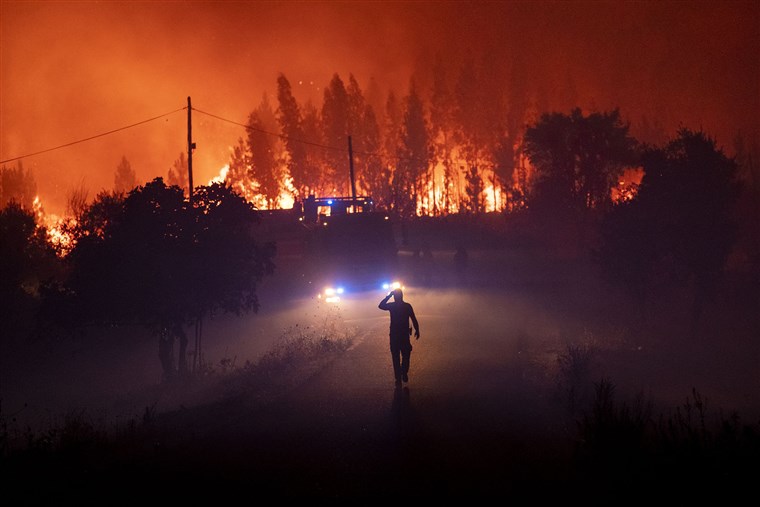DENVER, Oct 25 (NNN-AGENCIES) – One year after the most destructive wildfire in U.S. Colorado history, torched 208,913 acres (845.4 square kilometres) of forest land, biologists were lamenting the slow recovery of the nearby water system.
“As feared, recent surveys of the river showed thousands of fish were killed, as a result of the fire and its lasting impact,” CBS 4 Denver, reported.
“The runoff events we shot this summer, post fire, have had a detrimental impact on the fishery,” aquatic biologist, Kyle Battige, told the Denver station.
The survey was conducted, a year after the Cameron Peak Fire, the Centennial State’s worst fire on record, by Colorado Parks and Wildlife (CPW). It also engulfed some 461 structures, consumed millions of dollars of resources and took thousands of fire fighters to contain.
Despite widespread drought throughout the U.S. West, Colorado has seen significant precipitation this fall, and “since the rain on the burn scar caused flooding in the Poudre Canyon in July of this year,” that resulted in several deaths, wildlife officers with CPW have been monitoring “the detrimental impact the blaze had on fish in the Poudre River.”
A flash flood swept through the canyon on July 26, where three people died and one was missing, after being swept away by flooding and mudslides, according to the website of the Colorado Public Radio.
Battige surveyed the burn-scarred region and river drainage in July, one day after the deadly flash flood, and told Kiowa County Press, “a loss of fish has been observed and we will continue to monitor the situation.”
Senior CPW aquatic biologist, Jeff Spohn, also told the media, “we will hold off on fish population impact comments, until we can collect standardised data.”
The cause of the Cameron Peak Fire is still under investigation. It burned for 62 days beginning Aug 13, 2020, and on Oct 18 became the first wildfire in Colorado history to burn more than 200,000 acres,” according to Inciweb, an interstate incident information system.
The fire, controlled on Jan 12, 2021, destroyed a total of 461 structures and required 549 water pumps, 110 miles of bulldozer trails, and 232 miles of road work, to contain the blaze.
According to the United States Environmental Protection Agency (EPA), the authority started new researches for the impact of wildfires on water supply, including drinking, irrigation, fishing and recreation, two years ago.
Water supplies can be adversely affected during the active burning of a wildfire and for years afterwards, the EPA said, noting, the impacts on the western states is more significant, because 65 percent of fresh water supply in the region originates from forested watersheds, which, depending on conditions, can be highly susceptible to forest fires.
The absence of vegetation in the watershed can create conditions conducive to erosion and even flooding, and naturally occurring and anthropogenic substances can impact drinking water quality, discolour recreational waters, and may potentially contribute to harmful algal blooms, the EPA’s research said.
According to the latest data, released by the National Interagency Fire Centre, as of Oct 20, a total of 47,884 wildfires occurred in the United States this year, and had scorched 6,515,883 acres (26,368.8 square kilometres) of land.– NNN-AGENCIES





